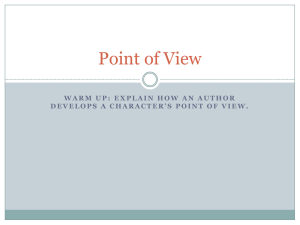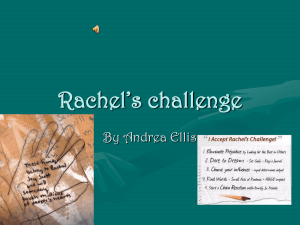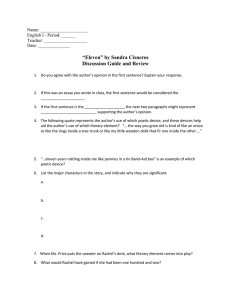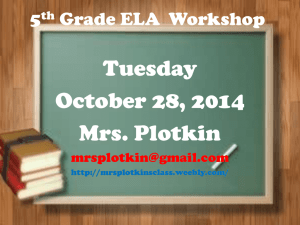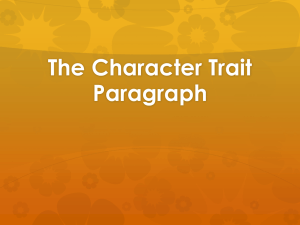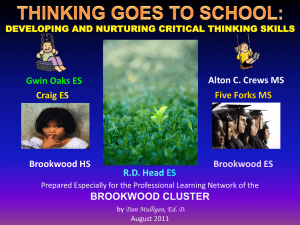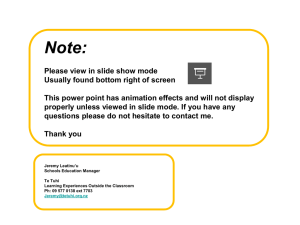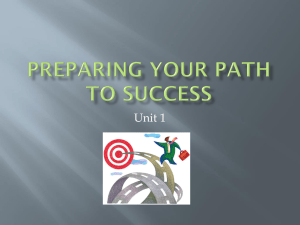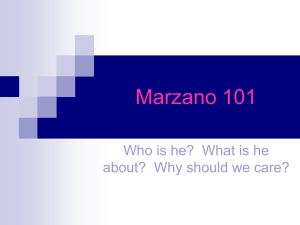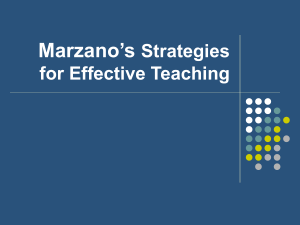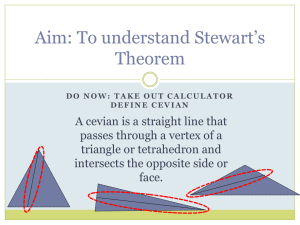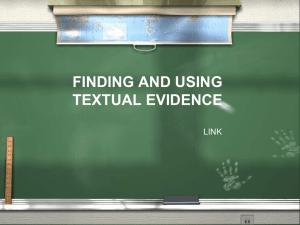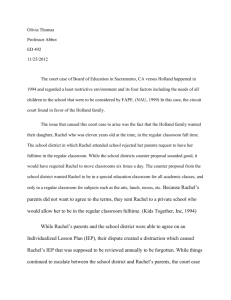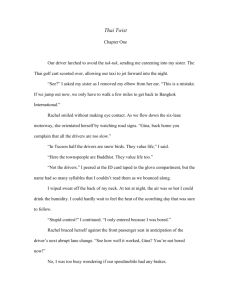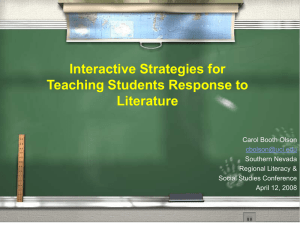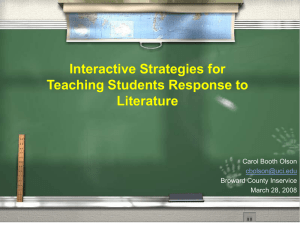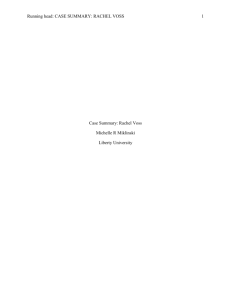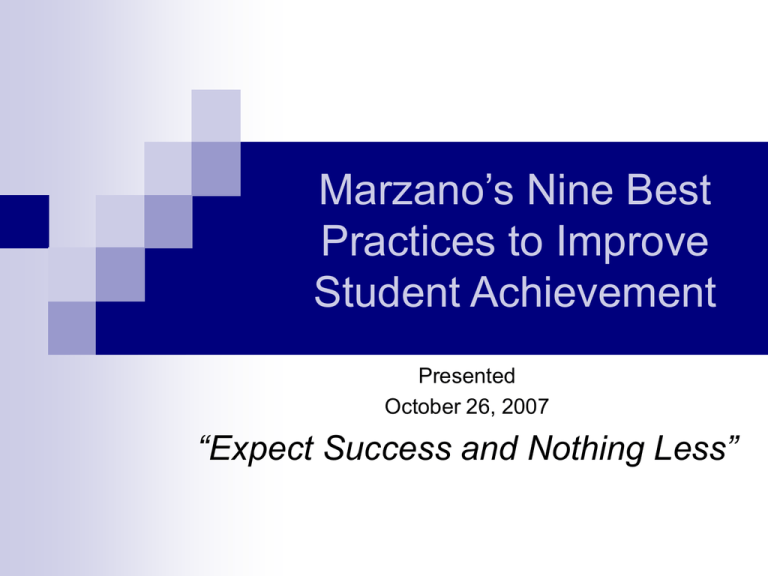
Marzano’s Nine Best
Practices to Improve
Student Achievement
Presented
October 26, 2007
“Expect Success and Nothing Less”
Best Practices Impacting Student Achievement
Rank
Best Practice
Generate and test
hypotheses
Nonlinguistic representations
Questions, cues, and
advance organizers
Comparing, contrasting,
classifying, analogies, and
metaphors
Homework and practice
Summarizing and note taking
Setting objectives and give
feedback
Reinforce effort and give praise
Cooperative learning
Percentile Gain
Rank
the best practices from 1-9
with 1 having the greatest impact on
student achievement.
Predict the percentile gain that each
best practice has on student
achievement.
Best Practices: Percent Increase
on Student Achievement
1. Finding Similarities and
Differences
2. Summarizing and Note
Taking
3. Reinforce Effort and
Give Praise
4. Assigning Homework and
Practice
5. Cooperative Learning
6. Nonlinguistic
Representation
7. Setting Objectives and
Providing Feedback
8. Generating and Testing
Hypotheses
9. Cues, Questions, and
Advance Organizers
Best Practices: Percent Increase
on Student Achievement
1. Finding Similarities and
Differences 45%
2. Summarizing and Note
Taking 34%
3. Reinforce Effort and
Give Praise 29%
4. Assigning Homework and
Practice 28%
5. Cooperative Learning
27%
6. Nonlinguistic
Representation 27%
7. Setting Objective and
Providing Feedback 23%
8. Generating and Testing
Hypotheses 23%
9. Cues, Questions, and
Advance Organizers 22%
Finding Similarities and Differences
Increases Student Achievement by
45%
The ability to break a concept into its similar and
dissimilar characteristics allows students to
understand and often solve complex problems
by analyzing them in a more simple way.
Representing similarities and differences in
graphic or symbolic form enhances students'
understanding of and ability to use knowledge.
Finding Similarities and Differences
Compare
Classify
Create metaphors and analogies
What can we compare?
Books
People
Objects
Animals
Places
Music
Events
Comparing Animals
Cats
Dogs
Both have four legs.
They are mammals
Both shed hair
They are pets
Comparing Animals: Cats and Dogs
1.
2.
3.
4.
Has 9 lives.
Has claws.
Can see in the
dark.
Hair balls
1. Both have four legs.
2. They are mammals
3. Both shed hair
4. They are pets
1.
2.
3.
4.
Has a good sense of smell.
Used in rescue situations.
Man’s best friend.
Good protection.
Encourage students to sum up the similarities and differences orally and in writing.
Text Comparison Chart
Life Events of
Me, too
Explain
Is the person like you? If yes, circle the “is” and complete the sentence. If “no”
Circle the “is not” and complete the sentence.
________________ (is, is not) like me because __________________________
________________________________________________________________
________________________________________________________________
Text Comparison Chart
Character Events of
Rachel “Eleven”
She feels 10, 9, 8, 7, 6, 5, 4, 3, 2, 1
She does not speak up when Sylvia
Saldivar says that she recalls seeing
Rachel with the unclaimed red
sweater
Mrs. Price forces Rachel to put on the
sweater without asking if it belongs to
her.
Me, too
Explain
x
I also have felt like a three year old
even though I am 12. I recall a time
that I cried like Rachel. I began to cry
because I received a bad grade on
my report card.
x
I once had a student tell the teacher
that they had seen me take a
student’s pencil case. Compared to
Rachel, I did speak up and told the
teacher that it wasn’t me.
x
Teachers sometimes make mistakes
like Mrs. Price. My fourth grade
teacher once told me to stop making
noises during a class. I told her that it
wasn’t me, and she later apologized
for blaming me. Mrs. Price, however,
did not even bother telling Rachel she
was sorry for putting her on the spot
in front of the entire class.
Text Comparison Summary
The character of Rachel in the story “Eleven”, is like me because we
both at times feel and act like we are three when we cry. We are
also alike in that we both had been called on by our classmates for
having done something we didn’t do. For example, Rachel was
accused of having been seen wearing an ugly red sweater, and I
was accused of having taken a classmate’s pencil case. We do
differ in that Rachel kept quiet when she was blamed, while I spoke
up to try and prove that I was innocent. Lastly, Rachel and I are
both alike in that our teachers put us on the spot in front of the class.
Rachel’s teacher, Mrs. Price made her put on the red sweater
without asking her if it belonged to her, and my teacher accused me
of making noises in class. My fourth grade teacher apologized to
me for falsely accusing me, unlike Mrs. Price, who did not make any
attempt to apologize to Rachel.
Graphic Organizers/Links for
Similarities and Differences
http://www.graphic.org/goindex.html
http://www.gamequarium.com/readquarium/anal
ogies.html
http://www.manatee.k12.fl.us/sites/elementary/p
almasola/ps3gleana.htm
Summarizing and Note Taking increases
student achievement by 34%
These skills promote greater comprehension by
asking students to analyze a subject to expose
what’s essential and then put it into their own
words.
Research shows that taking more notes is better
than fewer notes, though verbatim note taking is
ineffective because it does not allow time for
processing the information.
Tools for Summarizing and Note
Taking
http://www.greece.k12.ny.us/instructio
n/ela/6-12/Tools/Index.htm - 50 tools to
be used to help students engage in rigorous
thinking, organize complex ideas, and scaffold
their interactions with texts.
Reinforce Effort and Provide Praise increases
student achievement by 29%
Teachers must make the connection
between effort and achievement.
Research shows that although not all
students realize the importance of effort,
they can learn to change their beliefs to
emphasize effort.
Effort Rubric
4: The student works on tasks until completed and continues working on the
task even when difficulties arise or a solution is not immediately evident. The
student views difficulties that arise as opportunities to strengthen understanding.
3: The student works on tasks until completed and continues working on the
task even when difficulties arise or a solution is not immediately evident.
2: The student puts some effort into the task but stops working when difficulties
arise.
1: The student puts very little effort into the task.
0: Not enough information to make a judgment.
Achievement Rubric
4: The student exceeded the objectives of the task or lesson.
3: The student met the objectives of the task or lesson.
2: The student met a few of the objectives of the task or lesson but did
not meet others.
1: The student did not meet the objectives of the task or lesson.
0: The student did not do the task.


